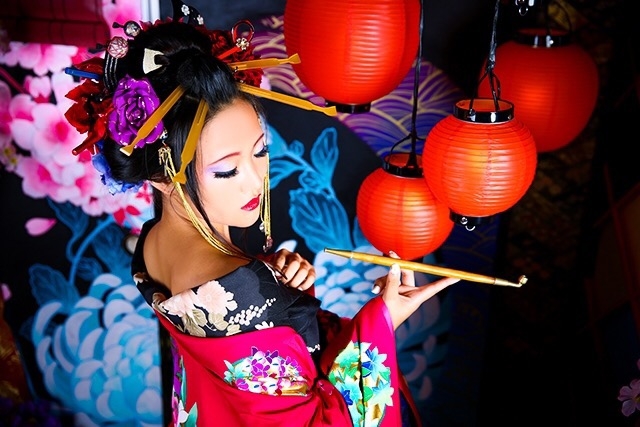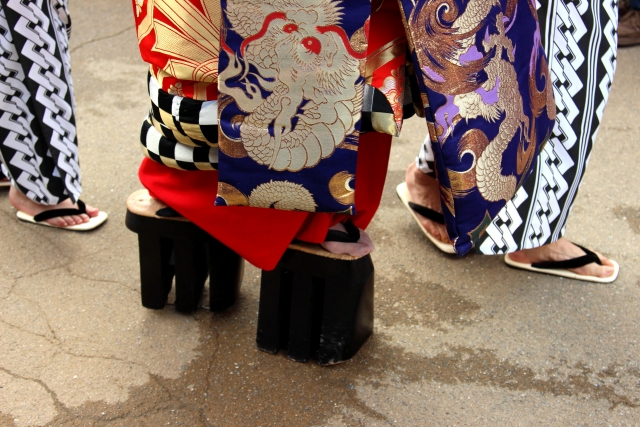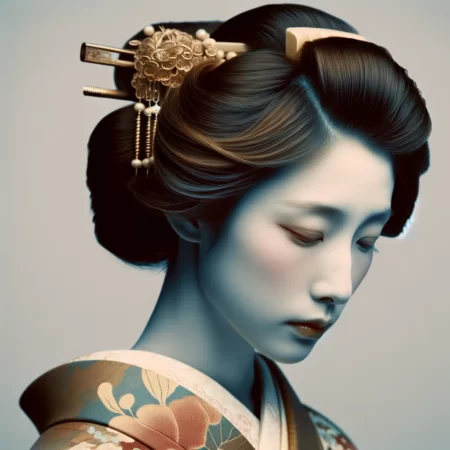Are you familiar with the term "oiran"? While watching Japanese period dramas, you might have come across beautiful women adorned in extravagant kimonos and numerous hairpins. You might have also encountered the term "oiran" in your studies of history.
What is Oiran?

Oiran refers to high-ranking courtesans within the pleasure quarters. The term "oiran" is said to have originated from the way attendants referred to them as "oiran-chi no ane-san" (the big sister of our house).
Becoming an oiran was not solely about physical beauty; they also had to be well-versed in arts and culture, capable of engaging with individuals of high status, and possess a refined character.
The origin of Oiran

The origin of oiran dates back to the Edo period, when courtesans were prevalent across Japan. To maintain public order and morals, the Tokugawa shogunate sanctioned brothels in specific districts, giving rise to the pleasure quarters.
Famous pleasure quarters in Japan included Yoshiwara in Edo (Tokyo), Shinmachi in Osaka, and Shimabara in Kyoto, with Yoshiwara being the most prominent, housing over a thousand courtesans.
The Strict Hierarchy of Oiran
In the rigid hierarchy of the pleasure quarters, oiran were a select few, with only about four or five among a thousand courtesans. Initially, there were only two ranks: "Tayu" and "Hashijorou," with "oiran" not yet being a term.
At the establishment of the pleasure quarters, the hierarchy (from highest to lowest rank) was as follows:
- Tayu
- Hashijorou
During this initial period, the system was relatively simple, with only these two ranks existing, and the term "oiran" had not yet come into use.
Some time after the establishment of the pleasure quarters, the hierarchy had become more complex (listed from highest to lowest rank):
- Tayu (Oiran)
- Koshi
- Sancha
- Tsubone
- Hashijorou
- Kirimise Jorou (Teppou Jorou)
By this time, the number of courtesans had increased, and their ranks were finely distinguished based on beauty and cultural refinement. The top rank was "Tayu," also known as "oiran," who catered to a select group of wealthy clients. The second rank was "Koshi," who, although not serving the same level of clientele as the "Tayu," still entertained quite affluent patrons. Both "Tayu" and "Koshi," being the highest among courtesans, had the privilege of selecting their clients and could refuse men based on their own assessments.
The third rank was "Sancha," named after powdered tea, which is brewed directly in water without being sifted from a bag, implying that, unlike the higher-ranked "Tayu" and "Koshi," they did not turn away clients.
The lowest rank was "Kirimise Jorou" (or "Teppou Jorou"). These courtesans, due to their lower prices, served numerous clients, leading to health issues and a higher incidence of infectious diseases due to poor sanitary conditions.
The term "Teppou Jorou" (literally "gunwoman") emerged as a metaphorical expression, indicating the risk clients took of contracting infectious diseases, similar to being shot by a gun, when visiting these lower-ranked courtesans.
Some time after the establishment of the pleasure quarters, with the advent of the Kyoho era (1716-1735), significant changes occurred in the hierarchy:
- Tayu (Abolished)
- Koshi (Abolished)
- Sancha Jorou (Oiran)
- Hashijorou
- Kirimise Jorou (Teppou Jorou)
During this period, the financial landscape drastically shifted. The Tokugawa shogunate, under the leadership of the 8th Shogun Tokugawa Yoshimune, was facing severe financial difficulties and embarked on a fiscal reform. This economic hardship was not limited to the shogunate; many samurai families were also struggling financially. As a result, the clientele that could afford the top-ranked courtesans, the Tayu and Koshi, dwindled, leading to the abolition of these ranks. Consequently, the Sancha, previously a lower rank, rose to become the top rank and were henceforth referred to as "Oiran."
The way to deepen relationship with an Oiran

To become close to an Oiran, men had to go through a three-step process. These steps were "initial visit," "ura" (back), and "familiarity." In the first two stages, the client could not engage in conversation with the Oiran. During these initial encounters, the Oiran would assess the client's behavior and financial capability to determine if he was suitable. Only upon reaching the "familiarity" stage would the Oiran deem the client worthy, allowing for conversation and shared dining experiences for the first time.
Once a client reached the stage of "familiarity" and then chose to patronize another courtesan, it was considered an act of infidelity. In such cases, the client was expected to pay an apology fee.
Throughout their interactions, the Oiran maintained a higher status than their clients. In the parlor room, the client was always seated in a lower position, while the Oiran took the higher seat, symbolizing her superior status in the relationship.
Oiran-Dochu

When one thinks of Oiran, the Oiran procession, or "Oiran Dochu," might come to mind. This is a scene often depicted in movies and dramas, where Oiran are seen walking elegantly in high geta (wooden clogs) and adorned in glamorous attire.
The Oiran Dochu refers to an event or parade during the Edo period in Japan, where Oiran, accompanied by their attendants, sumo wrestlers, and servants, would leave the pleasure quarters and parade through the town. It was a social event meant for Oiran to enjoy lavish banquets while showcasing their exquisite kimonos, decorations, and the distinctive 18cm high geta. The Oiran Dochu provided an opportunity for the courtesans to step out of their residences, display their stunning outfits while walking through the town, and receive attention and admiration from the wealthy and the general populace alike. During the procession, bystanders would marvel at their beauty and grandeur, and sometimes entertainment such as music, dance, and other performances were provided. This event was held during specific seasons, festivals, or special occasions, allowing the Oiran to demonstrate their presence and splendor to the surrounding community. While the Oiran Dochu was a glamorous event, it was also perceived as a social ritual and tradition, marking it as a significant occasion for the people of the time.
Summary
How was it? We have introduced an overview of Oiran, the origins of their emergence, their hierarchy, and the Oiran procession. There is a rich history surrounding Oiran, so for those who are interested, I encourage you to read more articles on the subject!



